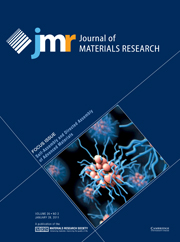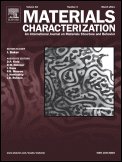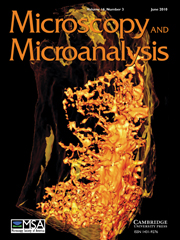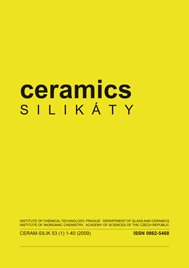
 Štengl, V.; Bakardjieva, S., Molybdenum-Doped Anatase and Its Extraordinary Photocatalytic Activity in the Degradation of Orange II in the UV and vis Regions. Journal of Physical Chemistry C 2010, 114, 19308–19317
Štengl, V.; Bakardjieva, S., Molybdenum-Doped Anatase and Its Extraordinary Photocatalytic Activity in the Degradation of Orange II in the UV and vis Regions. Journal of Physical Chemistry C 2010, 114, 19308–19317
Abstract: Molybdenum-doped anatase was prepared by thermal hydrolysis of peroxotitanium complex aqueous solutions containing a molybdenum peroxo-complex. The synthesized samples were characterized by X-ray diffraction, high-resolution transmission electron microscopy, selected area electron diffraction, and surface area (BET) and porosity (BJH) determination. Molybdenum doping caused the increase of unit cell constants of anatase and changes in the morphology of particles from spindle-like shapes to the shapes with rectangular or square cross sections. The presence of Mo5+/Mo6+ ion doping in the TiO2 nanostructure has no significant effect on the transformation of anatase to rutile. In the visible region, the photocatalytic activity is substantially enhanced in the molybdenum concentration of about 1.38%. The photocatalytic activity of doped titania samples was determined by the decomposition of Orange II dye during irradiation at 365 and 400 nm. The titania sample with 1.38% Mo has the highest catalytic activity during the photocatalyzed degradation of Orange II dye in an aqueous suspension in the UV and visible regions. Link

Štengl, V.; Houšková, V.; Bakardjieva, S.; Murafa, N., Photocatalytic degradation of acetone and butane on mesoporous titania layers. New Journal of Chemistry 2010, 34 (9), 1999-2005
Abstract: Mesoporous titania was prepared by homogeneous hydrolysis of titanium oxo-sulfate with urea in aqueous solutions in the presence of the cationic and anionic surfactants, cetyl trimethyl ammonium bromide (CTAB) and sodium dodecyl benzene sulfonate (SDBS), respectively. Following annealing at 600 °C the structure of prepared samples was determined with X-ray powder diffraction (XRD) and selected area electron diffraction (SAED). The morphology and microstructure characteristics were also obtained by scanning electron microscopy (SEM) and high resolution electron microscopy (HRTEM). Surface area (BET) and porosity were also determined. From the mesoporous titania samples, a 300 μm thin layer on glass desk 10 × 15 cm was created. The photocatalytic activity of the prepared layers was assessed from the kinetics of the photocatalytic degradation of butane and acetone in the gas phase. Link

Štengl, V.; Houšková, V.; Bakardjieva, S.; Murafa, N.; Bezdička, P., Niobium and tantalum doped titania particles. Journal of Materials Research 2010, 25 (10), 2015-2024
Abstract: Niobium and tantalum doped anatase were prepared by thermal hydrolysis of peroxotitanium complex aqueous solutions containing of niobium or tantalum peroxo-complexes at 100 °C for 3 days. Niobium-doping increased the unit cell constants of anatase and changed the morphology of TiO2 from spindle-like to rectangular or square cross section. Nb and Ta doping in the TiO2 nanostructure increases the anatase to rutile transformation temperature to >1000 °C. In the visible region, the photocatalytic activity is directly proportional to the concentration and increases with increasing of Nb concentration. The niobium addition enhances the photocatalytic activity of titania in the visible light region. Link
 Štengl, V.; Houšková, V.; Bakardjieva, S.; Murafa, N.; Maříková, M.; Opluštil, F.; Němec, T., Zirconium doped nano-dispersed oxides of Fe, Al and Zn for destruction of warfare agents. Materials Characterization 2010, 61, 1080-1088
Štengl, V.; Houšková, V.; Bakardjieva, S.; Murafa, N.; Maříková, M.; Opluštil, F.; Němec, T., Zirconium doped nano-dispersed oxides of Fe, Al and Zn for destruction of warfare agents. Materials Characterization 2010, 61, 1080-1088
Abstract: Zirconium doped nano dispersive oxides of Fe, Al and Zn were prepared by a homogeneous hydrolysis of the respective sulfate salts with urea in aqueous solutions. Synthesized metal oxide hydroxides were characterized using Brunauer–Emmett–Teller (BET) surface area and Barrett–Joiner–Halenda porosity (BJH), X-ray diffraction (XRD), infrared spectroscopy (IR), scanning electron microscopy (SEM) and energy-dispersive X-ray microanalysis (EDX). These oxides were taken for an experimental evaluation of their reactivity with sulfur mustard (HD or bis(2-chloroethyl)sulfide), soman (GD or (3,3′-Dimethylbutan-2-yl)-methylphosphonofluoridate) and VX agent (S-[2-(diisopropylamino)ethyl]-O-ethyl-methylphosphonothionate). The presence of Zr4+ dopant can increase both the surface area and the surface hydroxylation of the resulting doped oxides, decreases their crystallites' sizes thereby it may contribute in enabling the substrate adsorption at the oxide surface thus it can accelerate the rate of degradation of warfare agents. Addition of Zr4+ converts the product of the reaction of ferric sulphate with urea from ferrihydrite to goethite. We found out that doped oxo-hydroxides Zr–FeO(OH) being prepared by a homogeneous hydrolysis of ferric and zirconium oxo-sulfates mixture in aqueous solutions a comparatively higher degradation activity towards chemical warfare agents (CWAs). Degradation of soman or VX agent on Zr-doped FeO(OH) containing ca. 8.3 wt.% of zirconium proceeded to completion within 30 min. Link

Štengl, V.; Houšková, V.; Bakardjieva, S.; Murafa, N., Photocatalytic Activity of Boron-Modified Titania under UV and Visible-Light Illumination. Acs Applied Materials & Interfaces 2010, 2 (2), 575-580.
Abstract: Nanosized boron(III) oxide-doped titania was prepared by homogeneous hydrolysis of titanium oxo-sulfate with urea in aqueous solutions in the presence of amorphous boron. The prepared samples were annealing at 700 °C. The structure of as-prepared samples was characterized by X-ray powder diffraction (XRD) and selected area electron diffraction (SAED) and surface area (BET) and porosity determination (BJH). The morphology and microstructure characteristics were obtained by scanning electron microscopy (SEM) and high-resolution electron microscopy (HRTEM). The method of UV/vis diffuse reflectance spectroscopy was employed to estimate band gap energies of the boron-doped titania. The photoactivity of the prepared samples was assessed by the photocatalytic decomposition of Orange II dye in an aqueous slurry during irradiation at 365 and 400 nm wavelength. The prepared titania samples doped with boron(III) showed better photocatalytic activity in comparison with the reference TiO2 sample. These photocatalysts showed better photocatalytic performance under visible-light irradiation. Link

Štengl, V.; Murafa, N.; Bakardjieva, S., Morphology and Properties of Mo Doped Monodispersed Titania Particles. Microscopy and Microanalysis 2010, 16 (Supplement S2), 1204-1205.
Murafa, N.; Štengl, V.; Houšková, V., Tungsten Doped Monodispersed Titania Particles. Microscopy and Microanalysis 2010, 16 (Supplement S2), 1202-1203.

Štengl, V.; Houšková, V.; Murafa, N.; Bakardjieva, S., Synthesis of mesoporous titania by homogeneous hydrolysis of titania oxo-sulfate in the presence of cationic and anionic surfactants. Ceramics-Silikáty 2010, 54 (4), 368-378.
Abstract: Mesoporous titania was prepared by homogeneous hydrolysis of titanium oxo-sulphate with urea in aqueous solutions in the presence of the cationic and anionic surfactants, cetyl trimethyl ammonium bromide (CTAB) and sodium dodecyl benzene sulfonate (SDBS), respectively. Following annealing at 600°C the structure of prepared samples was determined with X-ray powder diffraction (XRD) and selected area electron diffraction (SAED). The morphology and microstructure characteristics were also obtained by scanning electron microscopy (SEM) and high resolution electron microscopy (HRTEM). Surface area (BET) and porosity were also determined. The prepared mesoporous titania samples showed considerably higher photocatalytic activity compared to reference samples prepared without surfactants and with P25 Degussa. Link
Kontakt
Ústav anorganické chemie AV ČR v.v.i.
250 68 Husinec-Řež
266 172 202
stengl@iic.cas.cz; stengl@me.com